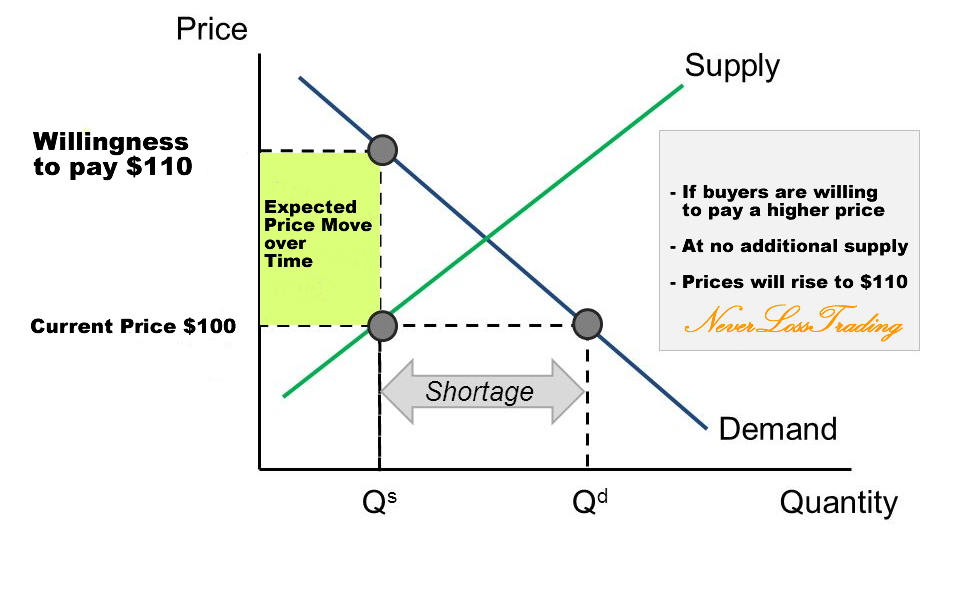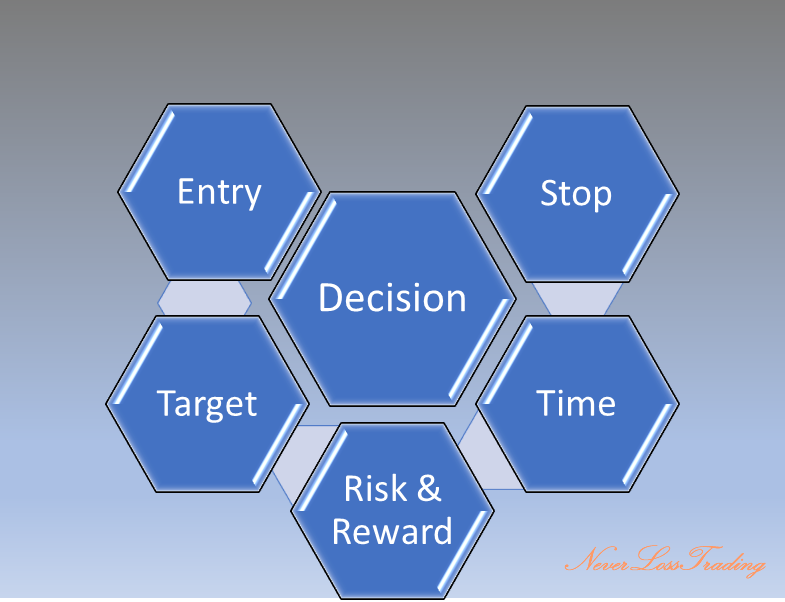Summary: Options trading offers a high leverage, limited risk strategy to participate in stock price moves. There are some rules to learn to successfully day trade Put and Call options, and we want to share a step-by-step approach to follow.
Options allow you to invest only a fraction of the underlying stock costs: In the concept we share, the investment volume for an options trade compared to 100 shares varies between 0.2% to 3% of the stock price.
Picking an example: Buying 100 SPY Shares requires a cash investment of $47,700. If you day trade from a margin account, your associated cash for the trade is about $12,000. Using our day trading options strategy, one risk unit to control 100 shares comes down to about $180, making day trading options very attractive; however, there are some rules to comply with.

FINRA and SEC regulate options trading, and you need to fulfill pattern day trading regulations (PDT):
- You meet the minimum PDT criteria if you make more than three day trades in five business days.
- As a PDT, your margin account needs to hold more than $25,000. If the total value of assets falls below that figure, you will not have any buying power.
What Constitutes A Day Trade?
- A day trade is simply two transactions in the same instrument in the same trading day, such as buying and consequent selling of a stock. The two transactions must offset each other to meet the definition of a day trade for the PDT requirements. So, if you hold any position overnight, it is not a day trade.
- If you do not reside in the U.S. or hold a U.S. brokerage account, you might get a break on this. For example, there are no pattern day rules for the UK and Canada, and we are unaware of those in other nations. These rules are set by the US FINRA and therefore apply only in the U.S.
Hint: Always check with your broker; they might even impose more stringent rules for PDT. Most brokers offer several different accounts, from cash accounts to margin accounts, and each account comes with its own rules and regulations you will need to follow.
When your day trading account holds less than $25,000, day trading Futures or FOREX is your choice, and we offer unique systems and mentorships to share how this is done best.
Now that we shared the rules and regulations that guide options day trading activities, let us focus on the how’s and why’s:
How to day trade options?
As an algorithmic trading house, we specify and follow mechanical rules of how to day trading options:
- The price movement of the underlying stock specifies entry and exit. When trading options, never work with a stop on the option; only define the stop-exit by a price point of the underlying stock chart. Same on the exit at target.
- After entering an options trade with a limit order, you define conditional OCO (one-cancels-the-other) orders based on the underlying stock’s price points, determining your exit. Our systems define the maximum price to pay.
- The system and indication also define the maximum holding period as a number of bars/candles: you exit if the trade is neither at the targe nor stop level.
- In the concept we share today, we are not trading time-based; decisions are only price-based, and the system defines the price movement you focus on.
- We use simple day trading strategies: buying weekly options: Puts (expecting the share price to drop) and Calls (expecting the share price to rise) based on the NLT Timeless defined price-move-value at a system-defined delta.
- We are not day trading for price movements of the underlying stock below $1.
- We share which stocks best to trade with this concept based on daily volumes, open interest, bid/ask spread.
Now the big question:
Why consider day trading options?
There are several reasons:
- When prices fall, the ability to borrow stocks from your broker for short-selling is often limited. The terms used are HTB (hard to borrow) and ETB (easy to borrow), and the status stock-by-stock fluctuates by broker and situation.
- Stocks underlie the uptick rule, which is a trading restriction that states that short selling a stock is only allowed on an uptick: If prices radically fall, your short-selling order will not be filled.
- You are not allowed to short stock in IRA or Cash Accounts, while you can trade their options by applying for option level-2 (just some paperwork).
Where is the advantage of day trading options?
Let us share what day trading with the NLT Timeless concept can give you:
- Aiming for a ≥ 65% return at pre-specified price situations on flexible risk units at high probability trade setups.
- Working with risk-limiting investments only.
- You are investing a fraction of the stock price.
- Uptick rules and HTB do not limit your trading.
- Learnable rules are applicable for multiple stocks, and we share where to best act and how.
Let us explain by a chart:
SPY Day Trading Chart

At the chart, our indicators spell out price thresholds: Buy >, Sell <, and you trade when those are surpassed in the price movement of the next candle. Dots define positive exit levels and red crossbars’ potential stops. So look at the chart and understand why we say: let the chart tell when to buy or sell!
In the above situation, trading SPY stock on four times margin would have given you a return per trade, shy of 2%, with the NLT Timeless Concept and day trading options ≥ 65%.
Why and how does this work?
There are multiple ways to decide on a trade. When using technical analysis, you have the following variables to determine a potential price move setup: Price change, volume change, Volatility change or a combination of those
The majority of trades are determined by a change of one of those variables over time: Moving averages would be a typical example for tracking and deciding based on an asset’s price movement over time. You most likely experienced that you predicted the future price move; however, on a counter-price-action, you got stopped, and you were out of a trade before it commenced in your predicted direction: Producing a loss instead of the desired win.
Like in a chess game: Acting with predictable moves is rarely a winning strategy.
If you use a dynamic, less predictable entry, exit, and stop definition, you certainly have the chance to increase your trading accuracy.
With NLT Timeless Trading, time is taken out of cohesion. This will make your decisions less predictable; however, the stronger argument of the idea is:
We are helping you to simplify your trading decisions by specifying conditions to execute bracket or OCO orders along with the price movement of underlying assets.
The system works for all asset classes: Stocks, Futures, and FOREX.
What we casually named variables are, in reality, results of an underlying change in supply and demand. In the base economic principle, price is a result of a change in supply and demand. Time is not considered a determining factor. The model assumes that markets regulate themselves instantaneously by economic principles.
Supply and Demand Correlations

The above graph gives a relation of the quantity offered and the resulting price. In the current situation, additional demand for a stock at $100 occurs. If no additional supply occurs, the equilibrium will move up to match supply and demand at $110.
The typical problem for a trader is: In hindsight, you know what happened, and we want to help you predict the future price happening with high predictability and frequently by our systems and concepts.
Money flow accepts price as the resulting variable of a change in supply and demand and specifies potential price move setups with clearly defined:
- Entries (price threshold)
- Exits (targets)
- Stops (wrong assumption)
With our systems and strategies, we want to help you to higher accuracy:
- Only accepting a trade when the direction is confirmed
- Exiting at a pre-defined target, prevening for the price to pull back and taking your profits away before you realize them
- Choosing an adequate stop, so you are not taken out of a trade by a too-tight stop and keeping reward and risk in a meaningful balance.
A Quick tip: buyers and sellers move the market; whoever has the upper hand moves the market in their direction.
This writeup focuses on day trading, and we refer to swing trading or longer-term investing in separate documentation.
By the NLT Timeless Concept, we simplify life for you and let the chart tell when to buy or sell, specifying all decision making dimensions at once:
- Entry Conditions: Execute buy-stop or sell-stop orders at pre-defined price thresholds at assumed probability, always knowing the maximum price to pay for an option and which strike to pick.
- Exit Condition: When is the target reached
- Stop Condition: When are you wrong and exit
- Risk Management: Defined and concluded in the NLT Options Trading Strategy
When day trading for pre-defined price moves, positions are kept open for a couple of bars/candles but always close the same day.
Clients say this: “Now I feel comfortable, walking away from the trade without feeling the need to control it.”
Would it not also comfort your trading decisions?
Let us show you chart examples using a combination of NLT Indicators on the NLT Timeless chart.
TSLA, Day Trading on the NLT Timeless Chart

Chart Analysis
Again, the chart speaks for itself, and our system offered multiple intraday trades with an exceptionally high win rate.
- Entry conditions: when the spelled out price threshold is surpassed in the price development of the next candle:
- Stops at the red crossbars or five bars in the trade without reaching the target or end of the day.
- Never enter a trade at the exit candle: stop or target.
When this caught your interest as a day trader, ask us for a live demonstration:
contact@NeverLossTrading.com Subj.: Demo.
With the help of our systems, we help retail traders to decide at trade entry for the five significant challenges they face to prevent the common mistakes often made:
- Trade entry decisions (when to trade)
- Exit decisions (where to take profit)
- Stops (where to place them)
- Maximum time in a trade (specified by the signal)
- Risk to reward (only trade at favorable setups)

NLT Timeless Day Trading is just one example of what you can learn in our mentorships.
We work one-on-one only and taught many traders to get independent in more than ten years in business.
Let us add another example of a widely traded and held stock: AAPL.
AAPL, Day Trading on the NLT Timeless Chart

Multiple indicators found a trade situation for going long at 11:15 a.m. EST. The red crossbar signified the stop, and it was not challenged until the trade came to target (gray dot on the chart) at about 3 p.m. EST. When trading the stock, you aimed for a 3% return on margin. By trading NLT-specified Call Options, you were striving for a 65% return on a minimum investment level of the price of one share. For more:
contact@NeverLossTrading.com Subj.: Demo.
Subscribe to our free publications and webinars; sign up here.
We are happy to hear back from you,
Thomas Barmann (inventor and founder of NeverLossTrading)
Disclaimer, Terms and Conditions, Privacy | Customer Support


No comments:
Post a Comment